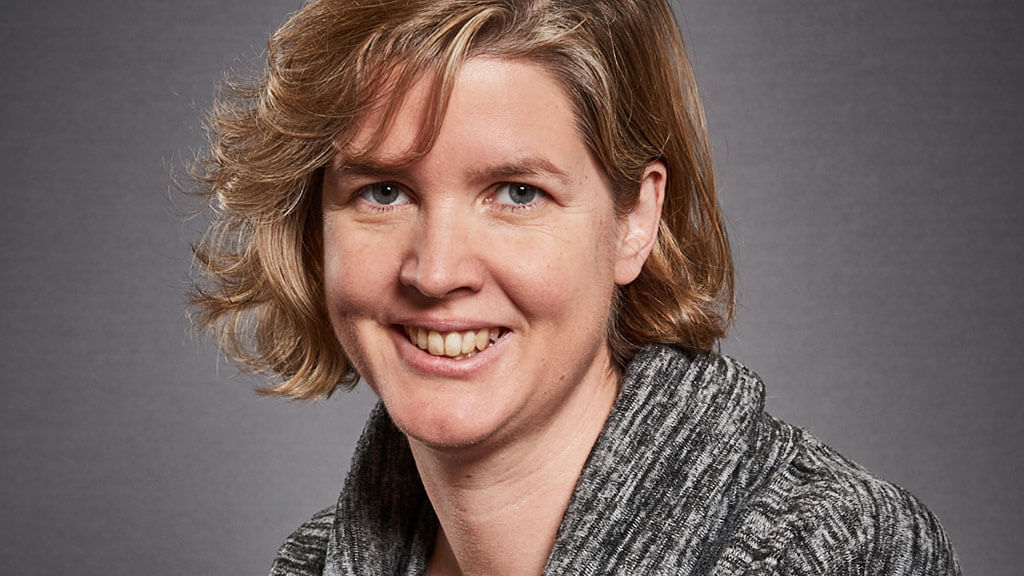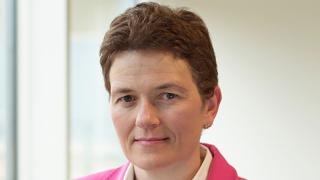Female scientific leadership – future prospects
Written by Dr Pip Beard | Senior Scientist and Group Leader, The Pirbright Institute and Windsor Leadership Alumna
I am a research scientist with a 22-year career in academia. Having originally trained as a veterinarian, I gradually specialised into the field of virus research and my particular expertise is poxviruses that affect livestock.
Working with these viruses under high containment conditions at The Pirbright Institute, in Surrey, I am convinced I have the best job in the world - I am paid to discover new knowledge and then share it with the world for the benefit of all. I can’t think of a more fascinating and rewarding thing to do, and I am grateful every single day of my life to have been able to follow this career path. As my career has progressed I have evolved from a role predominantly focused on science, disease and animals to one with increasing amounts of leadership. And as a female that’s a role with added pitfalls.
Female Leaders in STEM* Fields
There is a well-documented and well-recognised lack of female leadership in STEM fields. In 2020/2021 only 28% of professors in the UK were female. This percentage is lower in STEM fields with the proportion of female professors in mathematics and chemistry just 10% in 2017. In my area of expertise there is a remarkable disconnect between women at undergraduate level vs the most senior level of the profession.
There has been a predominance of women training to be veterinarians every year for the past 20 years, and over 60% of the profession are now female. However this numerical advantage is not mirrored at senior leadership levels.
There are ten veterinary schools in the UK, and all ten are headed by male veterinarians. This sparsity of female scientific leadership is also evident at the eight bioscience research institutes in the UK. Seven of the eight institutes are led by men with just one female director (Professor Angela Karp at Rothamsted Research).
The reasons behind the sporadic representation of female leadership in STEM are the topic of many excellent studies, with cultural assumptions about the leadership potential and effectiveness of women playing a strong part. Alice Eagly and Linda Carli debate these in their superb book “Through the Labyrinth” (Harvard Business Review Press, 2007). Its impeccably researched and highly readable and I can’t recommend it enough for anyone interested in learning more about the barriers facing women in leadership. The “Tapping all our Talents” reports from the Royal Society of Edinburgh are excellent, evidence-based summaries of why women do not remain in a STEM career and rise to leadership positions.
The Impact of COVID-19
The COVID-19 pandemic has forced the scientific community to rethink many long-held practices and assumptions, so has it influenced the way we view female leadership in science? It’s too early to know for sure, but it has been great to see female scientists such as Professor Dame Sarah Gilbert and Professor Tess Lambe from the Jenner Institute at Oxford University emerging as high-profile role models.
Role models are a very powerful means of persuading girls and women to consider a science career and see that senior scientific roles are accessible to them. On the negative side, COVID-19 effects have not been gender neutral, with massive economic and social burdens disproportionately impacting women and girls.
Evidence of this in the world of scientific research has already been noted in the under-representation of women as authors of COVID-19 research publications (10.1136/bmjgh-2020-002922). Broadly, the picture is undoubtedly bleak, but I’ve been faintly encouraged to see some recognition of the impact being noted and mitigations put in place which, I hope, will enable female scientists to weather the COVID-19 storm.
The Future of Female Scientific Leadership
So what is the overall direction of travel for female scientific leadership? Despite the impacts of COVID-19, I am more positive than negative. There are undoubtedly exemplars of bad practice still persisting, however there are many things to celebrate too.
Growing awareness and understanding of the structural and cultural barriers to female leadership, and more specifically female scientific leadership, is a big step forward. There are an increasing number of excellent studies on this, for example the Global Institute for Women’s Leadership has regular high quality, thought-provoking essays and articles (they are my top tip for following on Twitter!).
Along with this awareness have come suggestions on how to improve gender equality in science and science leadership. These emphasise for example the importance of mentorship, networks, and fair and transparent promotion and recruitment processes.
Supporting Gender Equality in Science
Hand in hand with these awareness-raising endeavours comes increased monitoring and accountability. The Athena Swan Charter has been a game-changer for academia with its bronze, silver and gold awards providing a framework for promoting and evidencing gender equality. And its powerful - it’s a lot more difficult for misogyny to hide when there are Athena Swan returns to be completed!
Research funding bodies have also worked hard to minimise bias in the way they award grants. UK Research and Innovation (UKRI), the Wellcome Trust, and the European Commission are the key funders for my field, and they all have the equivalent of inclusion, equality and diversity departments to help identify and tackle bias (such as the superb European Institute for Gender Equality).
Support for Senior Women
There are a number of organisations, such as Women on Boards which support women into board and leadership roles. Personally, I have had a lot of fun being part of Women on Boards this past year. One particularly inspirational woman that I met had already been the chair of some seriously high-powered boards, and was motoring her way up the leadership ladder. What struck me most was how relaxed and matter-of-fact she was about her success. I came away feeling that it was absolutely OK to be an ambitious female, and that wanting to be a leader wasn’t something to conceal but should be fostered and utilised, maybe even celebrated (quietly!).
My participation in the Emerging Strategic Leaders programme at Windsor in 2019-2020 was another important milestone in my leadership journey. The wide range of backgrounds of participants was something I hadn’t had much exposure to before - I’m a very contented career academic and as guilty as anyone of being happily insulated in that environment! The opportunity Windsor Leadership gave me to listen to other sorts of leadership and the challenges faced by a spectrum of leaders was really powerful.
Setting the Bar
It's these experiences which have helped me develop my own strategies to promote women in scientific leadership. I now have my own inclusivity rules. I won’t attend a scientific conference or workshop which has fewer than 40% female speakers. I won’t serve on a board which has less than 40% female participation. I won’t sit on a recruitment panel which doesn’t make explicit efforts at the outset to identify and address minority participation. And every time I decline to do any of these things I tell the conference organiser, or the board chair, or the chair of the selection panel why I am not able to participate, and offer support to overcome the bias. My hope is that these sorts of barriers that impede female leadership will eventually wither away, and the gender inequality that is so pervasive in STEM will wither away too.
* STEM stands for Science, Technology, Engineering and Medicine.
This blog post was written to raise awareness for the International Day of Women and Girls in Science. Instigated in 2015 by the United Nations it shines a light on the persistent gender inequality that exists at all levels of science, technology, engineering and mathematics (STEM) disciplines. Every year, 11 February is now a day when we celebrate the achievements of women and girls in STEM, but also recognise their continuing under-representation, particularly at senior and leadership levels.
Disclaimer:
The views expressed in Blogs, Articles, Podcasts and Videos posted on Windsor Leadership’s website and social media channels, remain the opinions of the individuals and do not necessarily represent the views or opinions of Windsor Leadership. Windsor Leadership does not accept any responsibility for the accuracy of the information shared. We hope however that the views prove to be useful in reflecting on the challenges of leading today.
Latest blogs
When leadership comes at a personal cost
In this personal blog post, Barry Joinson, Windsor Leadership Facilitator, explores the importance of maintaining clear boundaries between work and home, and how they can help to create clarity, safety, and trust.
Navigating the Boardroom: Professional Insights from Both Sides of the Table
In this blog, Emma FitzGerald explores the critical dynamics between Chairs and CEOs across commercial and not-for-profit sectors, emphasising the importance of trust, defined roles, and collaborative governance in driving organisational success.
The Power of Year-End Reflection
In this blog, Liz Ward, Windsor Leadership's Alumni Relations Manager, shares why reflection can be useful as the year draws to a close. Rather than rushing into new goals, taking time to pause and review successes, challenges, and lessons learned can strengthen clarity, team alignment and long-term vision.
Disclaimer:
The views expressed in Blogs, Articles, Podcasts and Videos posted on Windsor Leadership’s website and social media channels, remain the opinions of the individuals and do not necessarily represent the views or opinions of Windsor Leadership. Windsor Leadership does not accept any responsibility for the accuracy of the information shared. We hope however that the views prove to be useful in reflecting on the challenges of leading today.




